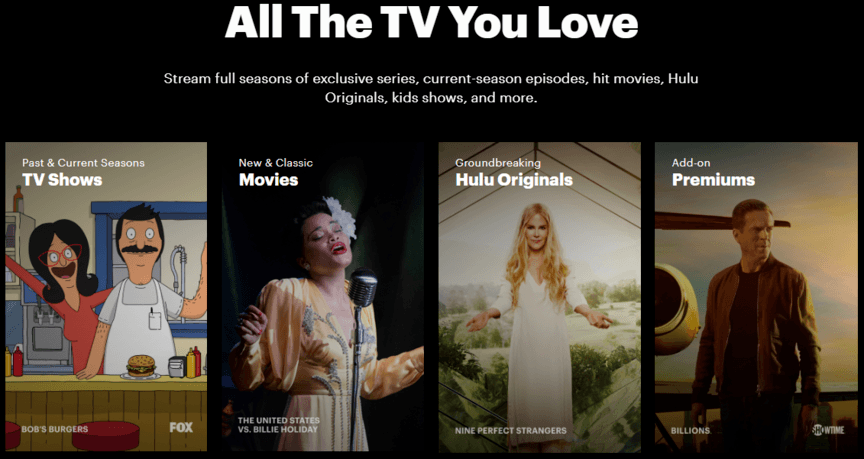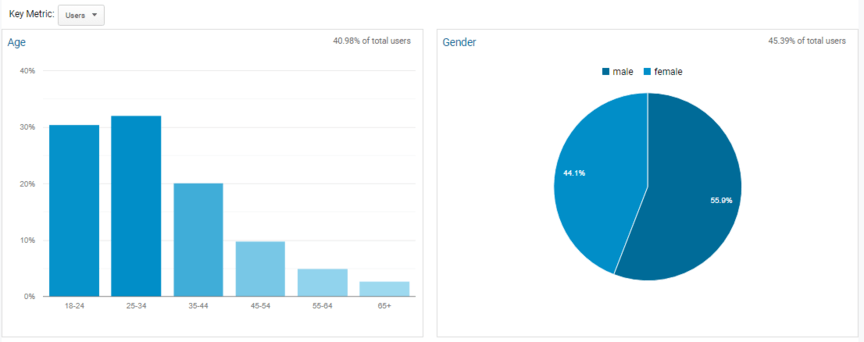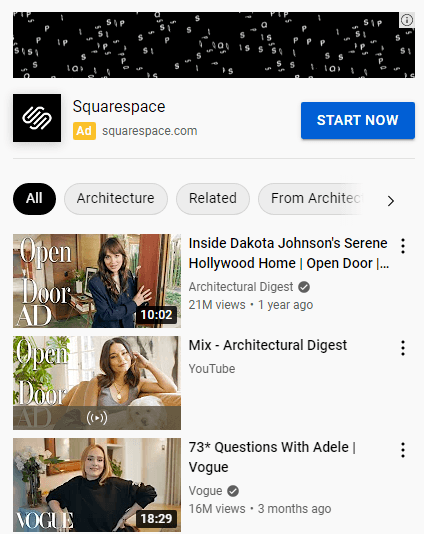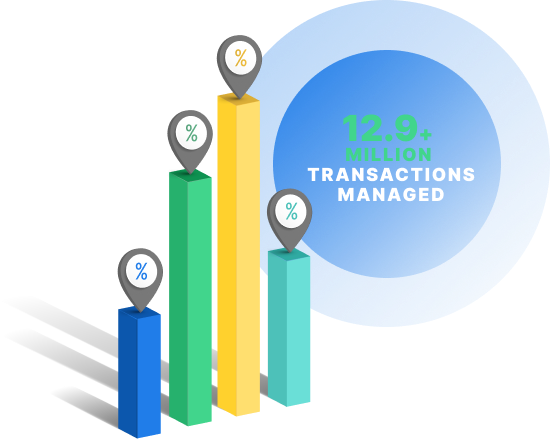What Is CTV Advertising and How Does It Work? [2024 Guide]
Asking yourself, “what is CTV advertising?” Well, you’re in the right place!
More people are switching from cable TV to smart TVs that contain access to many video streaming platforms. As a result, connected TV advertising, or CTV advertising, is becoming more popular than ever.
On this page, we’ll dive into the ins and outs of CTV digital advertising and answer common questions, including:
- What is connected TV advertising?
- How does connected TV advertising work?
- What are the benefits of connected TV advertising?
- How can you get started with connected TV advertising?
So, just keep reading to learn the CTV meaning and how it can help your business grow!
Bonus: Do you want access to even more CTV digital advertising tips and tricks? Then join over 200,000 other marketers who get their advertising advice Revenue Weekly! Sign up today to get digital marketing, and advertising strategies and tricks sent straight to your inbox from our award-winning experts for free!
Don’t miss our Marketing Manager Insider emails!
Join 200,000 smart marketers and get the month’s hottest marketing news and insights delivered straight to your inbox!
Enter your email below:
Inline Subscription Form - CTA 72
"*" indicates required fields
(Don’t worry, we’ll never share your information!)

What is CTV advertising?
CTV advertising is video advertising for TVs that have the ability to connect to the Internet. These are usually called smart TVs. You can use it to promote your brand on popular streaming platforms and services and use audience targeting features to ensure that your advertisements reach the consumers who are most likely to make a purchase.
How does connected TV advertising work?
So, now you know the CTV meaning. But you might have a new question — “How does CTV advertising work?”
With connected TV advertising, users will view your promotions when watching video content on their smart or connected TV.
With a TV that connects to the Internet, consumers can watch videos, movies, and TV shows on popular streaming platforms like Hulu, Netflix, YouTube, and more. You can create various connected TVads, including video ads, display ads, and much more.

CTV digital advertising continues to grow in popularity, with new trends appearing each year. So, if you’re looking for an opportunity to promote your products and services to your target audience when they watch their favorite videos, connected TV advertising could be the perfect option for your business.
OTT vs. CTV advertising
Now that we’ve gone over the CTV definition, let’s explore how it compares to OTT advertising
When researching CTV ads, you may have also heard the term over-the-top (OTT) advertising. These two terms may seem similar, but there are few key differences between OTT vs. CTV advertising.
OTT advertising refers to ads that display on streaming platforms on any device, including smartphones, tablets, laptops, smart TVs, and more. On the other hand, CTV advertising refers to ads that display on streaming platforms through smart TVs only.
Why use CTV advertising: 3 significant benefits of connected TV advertising
Now that you know the answer to the question, “what is connected TV advertising,” you might be wondering how connected TV ads can help your business grow.
Check out three significant benefits of connected TV advertising below:
1. Expand your reach by promoting your brand on popular streaming platforms
Expanding your reach is essential if you want more consumers to discover your business online. By promoting your brand with CTV advertising, you can boost your brand awareness and recognition, helping more consumers become familiar with your company.
Plus, CTV advertising enables you to advertise your products on services on some of the most popular streaming platforms with millions of active users. As a result, you can boost your online visibility and get your brand in front of more consumers as they stream online video content.
2. Use advanced targeting features to reach your target audience
Ensuring that your ads reach the consumers who are most likely to purchase your products and services is essential for driving more sales and revenue for your business.
With CTV advertising, you’ll have access to advanced audience targeting features to help your ads reach the consumers who can provide the most value for your company. For example, with audience targeting, you can target specific users based on their:
- Location
- Age
- Gender
- Purchase history
- Interests
- And more
If you’re looking for an excellent advertising option that helps you reach more members of your target audience, then CTV advertising is the perfect fit for your company.
3. Track and measure the results of your campaign with ease
With traditional advertising methods, it’s challenging to measure the success of your campaigns. But with CTV advertising, it’s easy to track and analyze your campaign results. You can view essential audience data, like their demographics, as well as campaign metrics, such as your views and impressions.
As a result, you can better understand how your campaign perform and identify any areas that need improvement. That means you can optimize your CTV advertising campaign to continuously drive better results for your company, earning you a higher return on investment (ROI) in the long run.
How to get started with your CTV advertising strategy
CTV advertising can do it all, from increasing your brand awareness to driving more conversions and sales. Are you ready to get started with connected TV ads? We’ve got you covered.
Check out the steps below to launch a successful CTV advertising campaign for your business. If you want some ideas for your own ad campaign, you can also look at these CTV ad examples to help you get started.
1. Understand your target audience
Before you can start planning your campaign, it’s essential to first understand your target audience. Since CTV advertising platforms enable you to create targeted ads, you must identify which consumers you want to see your promotions.
You can use marketing tools like Google Analytics to better understand your target audience. For example, with Google Analytics, you can view audience data like their demographics and the type of device they’re using on your website.

You can also analyze previous customer data to learn more about your audience. For example, you might notice that most of your customers are women who live in a specific city or region.
Once you’ve identified your target audience, you can create personalized marketing messages tailored to their wants and needs to encourage more leads and conversions for your company.
2. Choose the best platform
The next step is to choose your connected TV advertising platform. There are a variety of popular platforms to choose from, including:
YouTube
YouTube is one of the most popular video streaming platforms in the world. With millions of active users, it’s the perfect platform to start advertising your brand. Plus, over 40% of global shoppers purchase products they discovered on YouTube.
Hulu
Hulu is another popular CTV platform that enables users to watch their favorite shows and movies. This popular platform also has various advertising options to choose from, including pause ads, interactive living room ads, and much more.
Facebook Watch
Facebook Watch enables users to watch a variety of original shows and videos in sports, music, entertainment, and more.

With Facebook Watch, you can create video advertisements that display during users’ videos and throughout their newsfeeds when they scroll through their daily updates.
3. Select your ad type
Connected TV advertising platforms offer several ad types, so you can choose the best format that suits your business and goals. You can create the following connected TV ads:
Display ads
Display ads contain visual elements, like images, along with essential information about your business, like your website link or contact number.

On YouTube, you can create display ads that appear next to the users’ videos. With display ads, consumers can view information about your products and services without interrupting their videos.
Video ads
Video ads can appear before, during, or after a video on a CTV platform and are usually between 15 and 30 seconds long. With CTV digital marketing, you can create an attention-grabbing promotion that engages your target audience and encourages them to convert into customers using captivating video ads.
Pop-up ads
Pop-up ads can appear when users pause a video or at the bottom of the screen while watching a video.

On YouTube, you can create pop-up ads that display at the bottom of a video, so users can view your advertisement without having to stop their video.
Interactive ads
CTV advertising platforms like Hulu enable businesses to create interactive advertisements that engage their audience.

With Hulu’s interactive living room ads, you can create a promotion that users can explore by clicking and scrolling through your ad to explore your products and services.
4. Track and measure your success
The key to any successful CTV advertising campaign is to track your results. Many platforms offer analytics and insights, provided by CTV digital marketing, to help you gauge the success of your campaign. You can view important metrics like your views, impressions, and much more.
You’ll also see essential audience behavioral metrics like how many users clicked on your ad to visit your website and whether they made a purchase.
As a result, you can identify areas of your campaign that need improvement so you can make optimizations to continuously drive the best results for your company.
Time to Level Up Your Sales
Our long list of services helps you grow every aspect of your business with marketing strategies that are proven to increase bottom-line metrics like revenue and conversions.
In the past 5 years, we’ve managed more than 14.9 MILLION transactions across our client base.

Drive more sales and revenue with CTV advertising services from WebFX
Are you ready to drive more sales and revenue with CTV advertising? WebFX can help!
WebFX is an industry-leading digital advertising agency that’s helped businesses just like yours drive over $6 billion in revenue. We can help you create, implement, and manage a CTV advertising campaign that suits your company’s needs and enables you to achieve your goals.
Speak with one of our strategists today by calling 888-601-5359, or contact us online to learn more about how our CTV advertising services can help grow your business.
Table of Contents
- What is CTV Advertising?
- How Does Connected TV Advertising Work?
- OTT vs. CTV Advertising
- Why Use CTV Advertising: 3 Significant Benefits of Connected TV Advertising
- 1. Expand Your Reach by Promoting Your Brand on Popular Streaming Platforms
- 2. Use Advanced Targeting Features to Reach Your Target Audience
- 3. Track and Measure the Results of Your Campaign with Ease
- How to Get Started with Your CTV Advertising Strategy
- 1. Understand Your Target Audience
- 2. Choose the Best Platform
- 3. Select Your Ad Type
- 4. Track and Measure Your Success
- Drive More Sales and Revenue with CTV Advertising Services from WebFX
Related Resources
- Tap into a Larger Audience with Disney Plus CTV Ads
- Top 130+ Mind-Blowing OTT Statistics You Need to Know in 2024
- Use Netflix CTV Ads to Grow Your Brand Visibility
- Vimeo OTT Ad Basics
- What is OTT Advertising? Ultimate Guide to Over-the-Top Ads
- What is the Difference Between OTT vs. CTV Advertising?
- 8 CTV Ad Examples That Show You Why CTV Matters
- How Does CTV Advertising Work? the Ultimate Beginner’s Guide
- How to Advertise on Hulu in 2024: a Beginner’s Guide
- How to Advertise on Netflix: What You Need to Know About the Ad-Supported Tier
Marketing Tips for Niche Industries
- LegitScript for Google Ads
- Local SEO for Building Material Suppliers [+4 Tips for Success]
- Top 3 Online Advertising Services for Contractors
- What Are Co-op Advertising Dollars, and How Can They Help You?
- What is Industrial Advertising and Why Invest in Industrial Digital Advertising?
- Your Guide to Google Local Services Ads for Garage Door Companies
- YouTube Ads for Ecommerce: 5 Tips for YouTube Ecommerce Ads
- 3 Fantastic Farmers Market Advertising Ideas
- 5 Plumber Advertising Ideas That Get Leads
- 6 Ways You Can Use Remarketing for Plumbers









